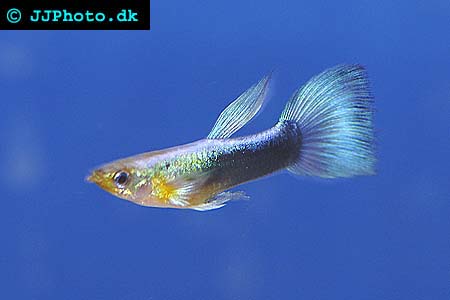Tag Archives: National Science Foundation
Scientists Hot on the Trail of Huge, Underwater Oil Plume In Gulf Of Mexico
Researchers backed by the NSF (National Science Foundation) and in conjunction with the WHOI (Woods Hole Oceanographic Institution) have discovered a plume of hydrocarbons which is more than 3,000 feet below the surface of the Gulf of Mexico and is thought to be 22 miles long at minimum. This plume is the residue of the BP Deepwater Horizon Oil Spill.
The 650 foot high, and 1.2 mile wide, plume of trapped hydrocarbons was discovered in the midst of a ten day subsurface sampling effort which took place from the 19th of June, until the 28th of June this year near the wellhead. The results have given a clear indication of where the oil has gone as the slicks on the surface have been shrinking and disappearing.
“These results create a clearer picture of where the oil is in the Gulf,” commented Christopher Reddy, a WHOI marine geochemist and one of the authors of a paper on the results that appears in this week’s issue of the journal Science.
This investigation – which was made possible by three quick action grants from the chemical and oceanography program at the NSF, with additional money made available by the US Coast Guard and NOAA via the Resource Damage Assessment Program – has confirmed that a large flowing plume was discovered which had
“petroleum hydrocarbon levels that are noteworthy and detectable,” Reddy explained.
So it seems we have not yet seen the end of the dreadful BP Oil Spill. While there has been no talk about what to do about this potentially disastrous situation, they are hard at work on it, but it could be months before an answer is found.
Fast paced evolution
We often think of evolution as something extremely slow that takes place over the course of thousands or even millions of years. The truth is however that certain adaptations can occur very quickly, sometimes over the course of just a few generations.
Male Guppy. Copyright www.jjphoto.dk
Eight years later, a time period equivalent of less than 30 guppy generations, the guppies living in the low-predation environment had adapted to this environment by producing larger and fewer offspring with each reproductive cycle.
“High-predation females invest more resources into current reproduction because a high rate of mortality,
driven by predators, means these females may not get another chance to reproduce,” explained Gordon, who works in the lab of David Reznick, a professor of biology.
The guppies living below the barrier waterfall where there were a lot of predators did not show any signs of producing fewer or larger offspring.
“Low-predation females, on the other hand, produce larger embryos because the larger babies are more competitive in the resource-limited environments typical of low-predation sites”, Gordon said. “Moreover, low-predation females produce fewer embryos not only because they have larger embryos but also because they invest fewer resources in current reproduction.”
The paper will be published in the July issue of The American Naturalist.
Swanne Gordon’s research team included David Reznick and Michael Bryant of UCR; Michael Kinnison and Dylan Weese of the University of Maine, Orono; Katja Räsänen of the Swiss Federal Institute of Technology, Zurich, and the Swiss Federal Institute of Aquatic Science and Technology, Dübendorf; and Nathan Miller and Andrew Hendry of McGill University, Canada.
Financial support for the study was provided by the National Science Foundation, the Natural
and Engineering Research Council of Canada, the Le Fonds Québécois de la Recherche sur la Nature
et les Technologies, the Swedish Research Council, the Maine Agricultural and Forestry Experiment
Station, and McGill University.
New study focused on human impact along the US West Coast
“Every single spot of the ocean along the West Coast is affected by 10 to 15 different human activities annually”, says Ben Halpern, a marine ecologist at the National Center for Ecological Analysis and Synthesis (NCEAS) at the University of California at Santa Barbara.
In a two-year long study, Halpern and his colleagues have documented the way humans are affecting the ocean off the West Coast of the United States. The research team has overlaid data on the location and intensity of 25 human derived sources of ecological stress, including commercial and recreational fishing, land-based sources of pollution, and climate change. The information has been used to construct a composite map of the status of West Coast marine ecosystems.
“We found two remarkable and unexpected results in this research,” says Halpern. “Ocean management needs to move beyond single-sector management and towards comprehensive
ecosystem-based management if it is to be effective at protecting and sustaining ocean health. Also, the global** results for this region were highly correlated with the regional results, suggesting that the global results can provide valuable guidance for regional efforts around the world.”
The study results show that hotspots of cumulative impact are located in coastal areas close to urban centres and heavily polluted watersheds.
“This important analysis of the geography and magnitude of land-based stressors should help focus attention on the hot-spots where coordinated management of land and ocean activities is needed,” said Phillip Taylor, section head in NSF’s* Division of Ocean Sciences.
You can find more information in the article from the research team published in the journal Conservation Letters on May 11. The project was conducted at NCEAS, which is primarily funded by NSF’s Division of Environmental Biology.
* National Science Foundation (NSF)
** The lead scientists on the U.S. study have already carried out a similar analysis on a global scale; the results were published last year in Science.


